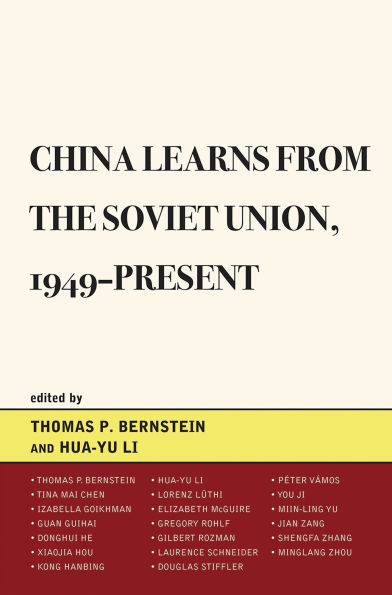It is well known that the Soviet Union strongly influenced China in the early 1950s, since China committed itself both to the Sino-Soviet alliance and to the Soviet model of building socialism. What is less well known is that Chinese proved receptive not only to the Soviet economic model but also to the emulation of the Soviet Union in realms such as those of ideology, education, science, and culture. In this book an international group of scholars examines China's acceptance and ultimate rejection of Soviet models and practices in economic, cultural, social, and other realms. The chapters vividly illustrate the wide-ranging and multi-dimensional nature of Soviet influence, which to this day continues to manifest itself in one critical aspect, namely in China's rejection of liberal political reform.
1100391930
China Learns from the Soviet Union, 1949-Present
It is well known that the Soviet Union strongly influenced China in the early 1950s, since China committed itself both to the Sino-Soviet alliance and to the Soviet model of building socialism. What is less well known is that Chinese proved receptive not only to the Soviet economic model but also to the emulation of the Soviet Union in realms such as those of ideology, education, science, and culture. In this book an international group of scholars examines China's acceptance and ultimate rejection of Soviet models and practices in economic, cultural, social, and other realms. The chapters vividly illustrate the wide-ranging and multi-dimensional nature of Soviet influence, which to this day continues to manifest itself in one critical aspect, namely in China's rejection of liberal political reform.
75.59
In Stock
5
1

China Learns from the Soviet Union, 1949-Present
562
China Learns from the Soviet Union, 1949-Present
562Related collections and offers
75.59
In Stock

Product Details
| ISBN-13: | 9780739142240 |
|---|---|
| Publisher: | Bloomsbury Publishing |
| Publication date: | 01/05/2010 |
| Series: | The Harvard Cold War Studies Book Series |
| Sold by: | Barnes & Noble |
| Format: | eBook |
| Pages: | 562 |
| File size: | 991 KB |
About the Author
From the B&N Reads Blog
